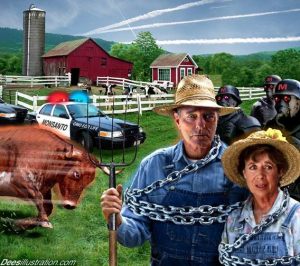 As you may know the US government is trying to pass a law, HR2749, which is about imposing totalitarian control on the food supply (such as mandating GMO-food) and restricting anything natural or healthy, such as access to supplements or even any natural food. Our health and very lives and the lives of our children depend on this being stopped. This is not an exaggeration. Our food supply will be placed in the hands of large factory farms and conglomerates like Monsanto who’s only objective is profits.
As you may know the US government is trying to pass a law, HR2749, which is about imposing totalitarian control on the food supply (such as mandating GMO-food) and restricting anything natural or healthy, such as access to supplements or even any natural food. Our health and very lives and the lives of our children depend on this being stopped. This is not an exaggeration. Our food supply will be placed in the hands of large factory farms and conglomerates like Monsanto who’s only objective is profits.
Super Human Radio, 2528 Glen Eagle Dr, Louisville, KY 40222, USA

 Tuesday, September 1, 2009 at 11:31PM
Tuesday, September 1, 2009 at 11:31PM



 A new food safety bill is on the fast track in Congress-HR 2749, the Food Safety Enhancement Act of 2009. The bill needs to be stopped.
A new food safety bill is on the fast track in Congress-HR 2749, the Food Safety Enhancement Act of 2009. The bill needs to be stopped.